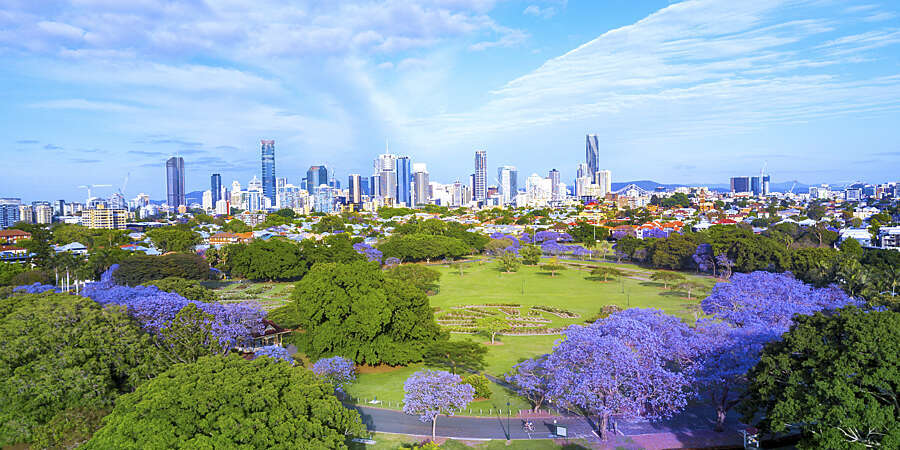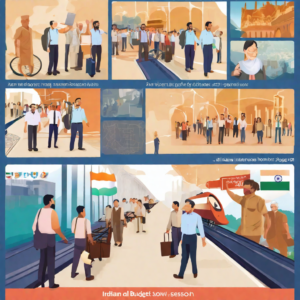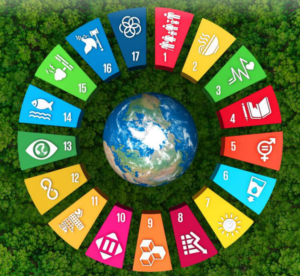This is a quick round up of cities around the world considered to be advanced or advancing in implementation of Green Technologies, in our progress towards sustainable living. The objective of this round up is to study their methods and technologies and see what can be adopted for India and similar Asian neighbors. No one size fits all and no single method works for all.
This moving into sustainable living is now more about urban planning and hence participation of local governments is imperative and needs to be done in an urgent manner. Building capacity, understanding and proper plans towards these tasks is a humongous and time-consuming effort. So here we go with the simple and brief roundup.
| S.No | City | Country | Summary |
| 1 | Dharnai, Bihar | India | Dharnai, Bihar: This village in India became the first one to completely run on solar power in 2014, providing electricity to more than 2,400 people [The villagers also use biogas plants, organic farming, and rainwater harvesting to reduce their dependence on fossil fuels and conserve natural resources |
| 2 | Khonoma, Nagaland | India | Khonoma, Nagaland: This village in India is considered to be the country’s first green village, as it has banned hunting and follows a eco-friendly version of farming called Jhum agriculture, which enriches the soil from within. The village also has a community-conserved area that protects the biodiversity and wildlife of the region |
| 3 | Copenhagen | Denmark | This city in Europe aims to become the world’s first carbon-neutral capital by 2025. It has invested heavily in renewable energy, cycling infrastructure, green roofs, waste management, and public transport to reduce its greenhouse gas emissions and enhance its liveability. |
| 4 | Masdar City | UAE | This city in the Middle East is designed to be a zero-carbon, zero-waste, and car-free city, powered entirely by renewable energy sources such as solar, wind, and geothermal. It also uses smart technologies, passive cooling, and water recycling to minimize its environmental impact and optimize its resource efficiency. |
| 5 | Lancaster City | USA | some of the initiatives that Lancaster City has undertaken are: Partnering with SGH2 Energy to launch the world’s largest green hydrogen production facility, which will use recycled mixed paper waste to produce hydrogen that reduces carbon emissions by two to three times more than green hydrogen produced using electrolysis and renewable energy. Signing a contract with Heliogen to produce green hydrogen from concentrated solar energy, which will be used to fuel the city’s municipal fleet and reduce its dependence on fossil fuels. Participating in the Sustainable Pennsylvania Municipal Certification Project, which evaluates and recognizes the city’s efforts in various aspects of sustainability, such as waste reduction and recycling, land use and housing, parks and land conservation, public health and safety, governance and community engagement, local and regional cooperation, and water use, conservation and quality. |
| 6 | Helsiniki | Finland | This city has the highest share of green space in Europe, at 72%, and aims to be carbon-neutral by 2035. It also has a high share of renewable energy, low levels of air pollution, and a comprehensive public transport system. |
| 7 | Stockholm | Sweden | Stockholm, Sweden: This city was the first to receive the European Green Capital Award in 2010, and has since continued to invest in renewable energy, green transport, and waste management. It also has a large number of green areas, such as the Royal National City Park, and a high level of environmental awareness among its citizens. |
| 8 | Ljubljana | Slovenia | This city was the European Green Capital in 2016, and has since maintained its commitment to sustainability and green living. It has a large pedestrian zone in the city center, a well-developed public transport network, and a high recycling rate. It also has a rich natural heritage, with the Ljubljanica River and the Ljubljana Marshes providing habitats for diverse flora and fauna. |
| 9 | Oslo | Norway | Oslo, Norway: This city was the European Green Capital in 2019, and has a vision to become a zero-emission city by 2030. It has implemented various policies and initiatives to reduce its carbon footprint, such as banning cars from the city center, introducing a congestion charge, and supporting electric mobility. It also has a high proportion of green spaces, such as the Oslo Forest and the Vigeland Sculpture Park. |
| 10 | Shenzen | China | This city is one of the fastest-growing and most innovative cities in the world, and has also made remarkable progress in environmental protection and green development. It has invested heavily in renewable energy, electric vehicles, waste management, and urban forestry. It also hosts the world’s largest waste-to-energy plant, which can process up to 5,000 tons of garbage per day and generate electricity for 100,000 households. |
| 11 | Guiyang | China | This city is known as the “forest city” of China, as it has a forest coverage rate of over 40%. It also boasts of many natural attractions, such as the Qingyan Ancient Town, the Huaxi Wetland Park, and the Tianhe Lake. It has also implemented various policies and initiatives to promote green industries eco-tourism. |
| 12 | Nanning | China | Nanning, China: This city is the capital of the Guangxi Zhuang Autonomous Region, and is famous for its subtropical climate and lush vegetation. It has a green space rate of over 40%, and is home to many parks, gardens, and greenways. It also has a strong focus on green transportation, such as buses, subways, and bicycles. It also hosts the China-ASEAN Expo, which fosters cooperation and exchange on green development among the countries in the region. |
| 13 | Singapore | Singapore | This city-state is widely regarded as one of the greenest and most livable cities in the world, and has won several awards and accolades for its sustainability efforts. It has a comprehensive and integrated approach to urban planning, design, and management, which balances economic, social, and environmental objectives. It also has a high share of renewable energy, water recycling, waste reduction, and green buildings. It also has a rich biodiversity, with over 300 parks and four nature reserves. |
| 14 | Bangkok | Thailand | This city is the capital and largest city of Thailand, and is also one of the most popular tourist destinations in the world. It has a vibrant and diverse culture, cuisine, and nightlife, as well as many historical and cultural attractions. It has also made significant strides in green development, such as expanding its public transport network, promoting urban agriculture, and creating more green spaces. It also has a strong commitment to climate action, and aims to reduce its greenhouse gas emissions by 25% by 2030. |
| 15 | Taipei | Taiwan | This city is the capital and largest city of Taiwan, and has been recognized as one of the most livable cities in Asia. It has a high share of renewable energy, especially solar power, and has implemented various policies and initiatives to promote energy efficiency, green transportation, and waste reduction. It also has a rich cultural and natural heritage, with many historical sites, museums, and parks. |
| 16 | Melbourne | Australia | This city is the second-largest city in Australia, and has been ranked as the world’s most liveable city for seven consecutive years. It has a strong commitment to sustainability and climate action, and has set a target to become a zero-net emissions city by 2050. It also has a high percentage of green spaces, such as the Royal Botanic Gardens and the Yarra River, and a vibrant and diverse culture, with many festivals, events, and attractions. |
| 17 | Auckland | New Zealand | This city is the largest and most populous city in New Zealand, and has a stunning natural setting, surrounded by water, volcanoes, and forests. It has a high share of renewable energy, mainly from hydro and geothermal sources, and has a comprehensive public transport system, including buses, trains, and ferries. It also has a high level of environmental awareness and social responsibility, and hosts many events and initiatives to support sustainability and community development. |
| 18 | Bridgetown | Barbados | This city is the capital and largest city of Barbados, and has been designated as a UNESCO World Heritage Site for its historical and cultural significance. It has also been pursuing various initiatives to enhance its environmental sustainability, such as promoting renewable energy, improving waste management, and restoring its natural heritage, such as the Constitution River and the Garrison Savannah. |
| 19 | Mexico City | Mexico | This city is the capital and largest city of Mexico, and one of the most populous and influential cities in the world. It has also been making remarkable efforts to improve its environmental quality and resilience, such as expanding its public transport system, including the Metrobus and the Ecobici, implementing a bike-sharing program, creating more green spaces, such as the Chapultepec Park and the Alameda Central, and reducing its air pollution and greenhouse gas emissions. |
| 20 | Honolulu | Hawaii | This city is the capital and largest city of Hawaii, and a popular tourist destination for its natural beauty and cultural diversity. It has also been committed to becoming a more sustainable and livable city, such as adopting a 100% renewable energy goal by 2045, supporting local food production and consumption, enhancing its water security and conservation, and protecting its biodiversity and ecosystems, such as the Waikiki Beach and the Diamond Head. |
| 21 | Vancouver | Canada | This city is the largest city in British Columbia, and one of the most livable and greenest cities in the world. It has a vision to become the greenest city in the world by 2030, and has implemented various strategies and actions to achieve this goal, such as increasing its renewable energy supply, promoting green transportation and mobility, reducing its waste generation and disposal, and creating more green buildings and neighbourhoods. |
some of the criteria that are used to evaluate the greenness of a city include:
- The percentage and distribution of green spaces, such as parks, gardens, forests, and urban farms, that provide benefits for health, biodiversity, and climate adaptation.
- The use and production of renewable energy sources, such as solar, wind, hydro, and biomass, that reduce greenhouse gas emissions and dependence on fossil fuels.
- The promotion and facilitation of sustainable mobility, such as cycling, walking, public transport, and electric vehicles, that reduce air pollution and congestion.
- The implementation and innovation of green technologies, such as smart grids, waste management, water recycling, and green buildings, that optimize resource efficiency and circular economy.
As it can be seen from the above, the bigger metropolis is transforming and quickening their phase of green transition.
Second, a good look at their approach involves partnership with green tech companies for moving into sustainable energy resources and combine it with a good urban planning approach.
This involves innovative use of public spaces, bio diversity parks, encouraging bicycle tracks, conserving water resources and importantly its waste generation and disposal converting it to electricity.
Making public transportation cheaper, modern and energy efficient will naturally reduce usage of cars and pave the way for more sustainable mobility.
This brings in inclusivity as all development does not get concentrated in a small stretch or a area, creating traffic jams and bottlenecks to health, mobility and safety.
It is important to study these cities and model our green transition around the methods, processes and technologies adopted successfully there to our local environment.




